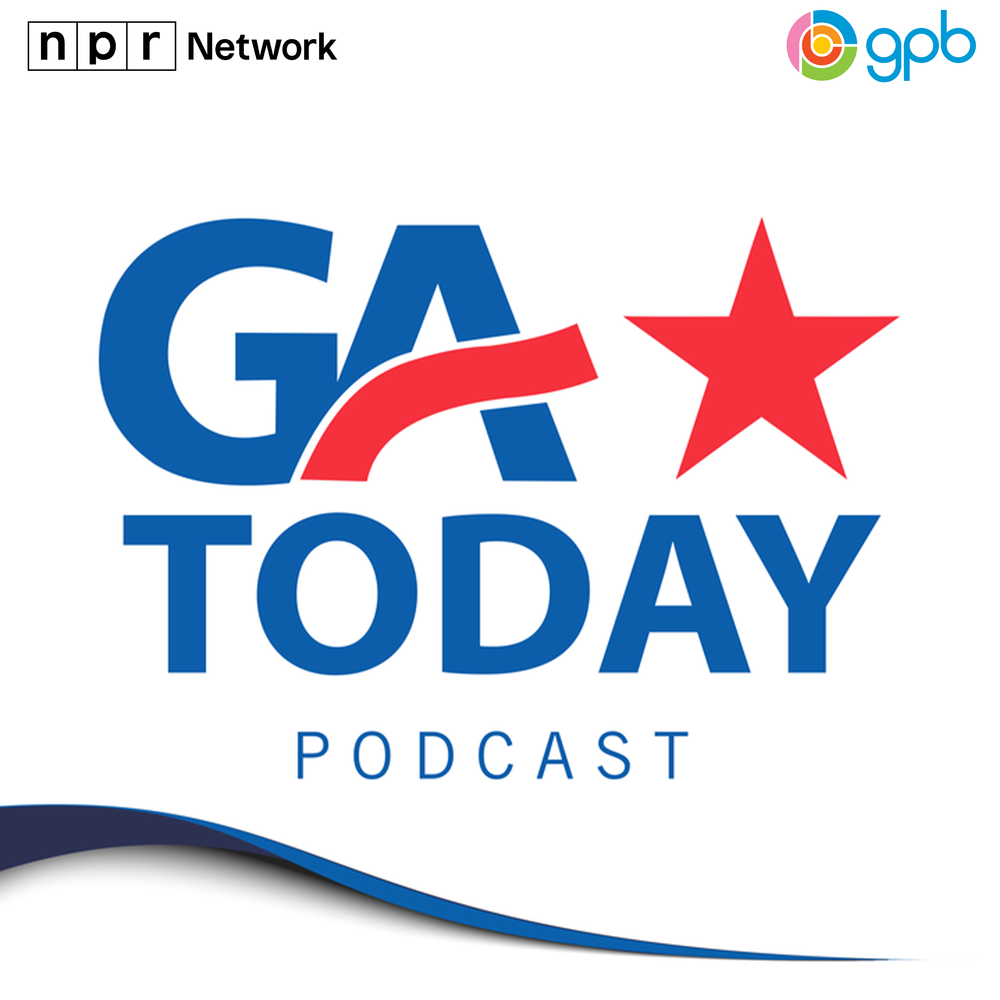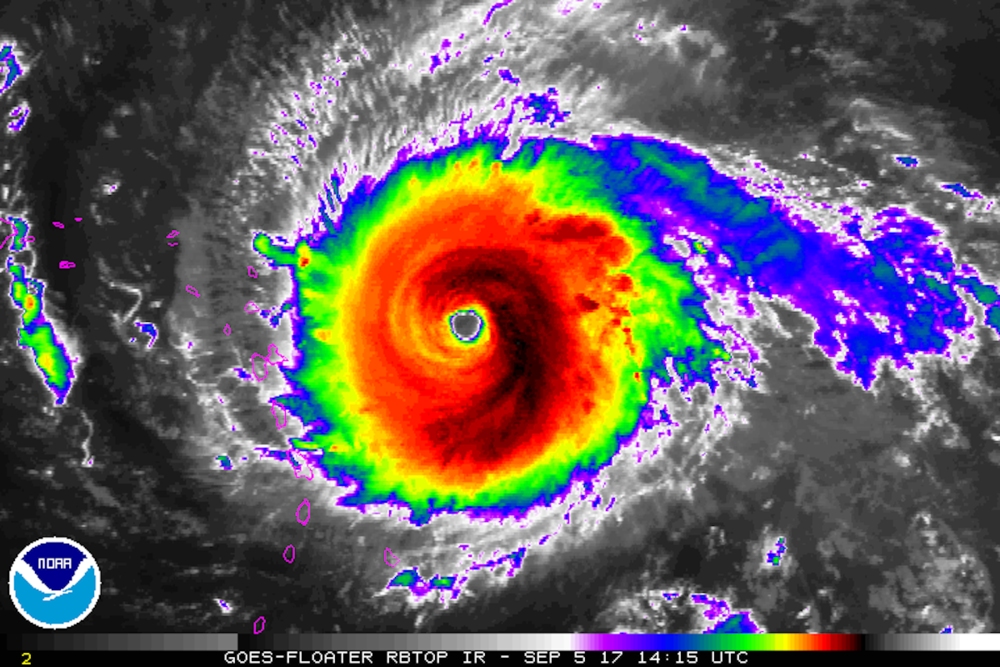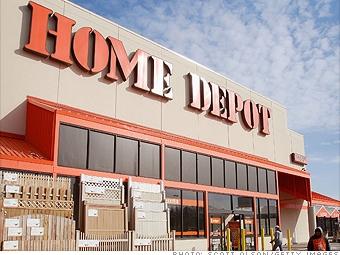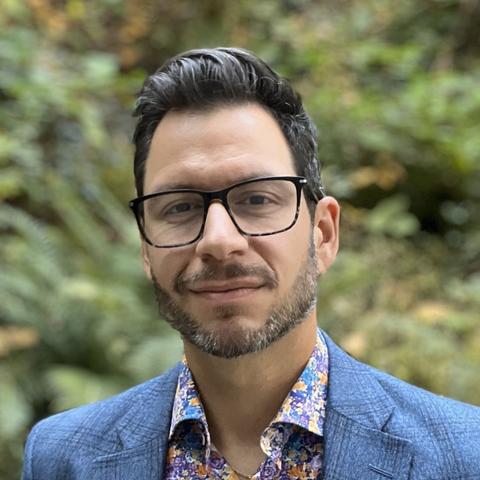
Section Branding
Header Content
Georgia Today: Wellpath lawsuit dismissed; Mangroves come to Georgia; Hurricane season preview
Primary Content
LISTEN: On the Wednesday, June 5 edition of Georgia Today: A lawsuit filed against the state by prison health care provider Wellpath is dismissed; climate change brings a new tropical plant species to Georgia; and we'll have a comprehensive preview of the coming hurricane season.

Peter Biello: Welcome to the Georgia Today podcast from GPB news. Today is Wednesday, June 5. I'm Peter Biello. On today's episode. A lawsuit filed against the state by prison health care provider Wellpath is dismissed. Climate change brings a new tropical plant species to Georgia, and we'll have a comprehensive preview of the coming hurricane season. These stories and more are coming up on this edition of Georgia Today.
Story 1:
Peter Biello: A state judge has dismissed a lawsuit against Georgia agencies by prison health care provider Wellpath over contract negotiations it said the state mishandled. A separate case against the state itself has yet to be resolved. But the lawsuit also raises concerns about prison health care conditions. GPB's Sofi Gratas has more.
Sofi Gratas: In the suit, Wellpath alleged it didn't get a fair chance to negotiate a new contract with the Georgia Department of Corrections before the agency signed with Centurion Health, slated to take over services this summer. Those claims were dismissed. But Wellpath also alleged that over three years it spent millions of its own money to uphold the state's constitutional right to provide prisoners with adequate health care. That's included addressing a systemwide backlog of sick patients, that the GDC confirmed, and managing unexpected costs from prison violence. Before the GDC stopped reporting cause of death this February, homicides in Georgia prisons were on track to meet record high rates from 2023. Meanwhile, a federal investigation into prison conditions is ongoing. For GPB News, I'm Sofi Gratas in Macon.
Story 2:
Peter Biello: The number of white nationalist, anti-government and other hate groups active in Georgia nearly doubled from 2022 to 2023. The Southern Poverty Law Center's annual report on Hate and Extremism, released yesterday, identifies 49 such groups in the state. It says hate groups have been emboldened by the mainstreaming of hard-right politics ahead of a presidential election cycle. The rise also coincides with Georgia's status as a swing state.
Story 3:
Commissioners in Cherokee County, north of Atlanta, chose to uphold an equal partisan split on the local elections board despite pushback from Republicans. GPB's Sarah Kallis reports.
Sarah Kallis: Commissioners in the majority Republican county chose to appoint one Democrat and one Republican to the Board of Elections, continuing a historic equal split between the parties. Local Republican activists had advocated for the Democrat seat to be given to a Republican, leading three Republicans and one Democrat on the Board of Elections. Several voting rights groups and Cherokee Democrats pushed back. Commissioner Richard Weatherby opposed the current split.
Richard Weatherby: We made a big mistake regarding representation on the Board of Elections. Statistics prove out that approximately 75% of the votes cast in the last two elections have been Republican.
Sarah Kallis: Commissioners reappointed Larry Hand for the Republican seat and Scott Little to fill the Democrat seat. However, local Democratic Party chair Nate Rich said Little is not known or active in the local Democratic Party. For GPB News, I'm Sarah Kallis in Atlanta.
Story 4:
Peter Biello: As the climate warms, Georgia is seeing more plants and animal species that normally live somewhere else. The newest scientifically confirmed climate migrator in our state is the mangrove tree. The tropical plant thrives in warm, shallow waters, and in the U.S. is associated with places like Hawaii and Puerto Rico. Their northernmost documented location on the Atlantic coast was just north of the Saint Johns River in Florida. But earlier this year, three biologists found several of them just north of the Saint Marys River. The National Park Service's Chas Vervaeke was one of them.
Chas Vervaeke: All of us had the same reaction. We were like, "Holy cow! There are mangroves in Georgia."
Peter Biello: He says the discovery excited him because of its opportunity to educate people about climate change.
Chas Vervaeke: Those are up here because our winters are less severe and we're having less severe freezes.
Peter Biello: Georgia winters have warmed an average of 3 degrees since 1970. That's according to Climate Central. Vervaeke says the mangrove seeds were probably swept north by increasingly numerous and strong tropical storms.

Story 5:
Peter Biello: Between now and November, anywhere from eight to 13 hurricanes are likely to form over the Atlantic Ocean. That's the highest range federal forecasters have ever projected for a hurricane season. But beyond the sheer number of storms, what else should Georgians be aware of? For that, GPB Savannah reporter Benjamin Payne spoke with Jamie Rhome. He's deputy director of the federal government's National Hurricane Center.
Benjamin Payne: A lot of the discussion around hurricanes revolves around Florida, and understandably so, since hurricanes make landfall more often in that state than any other. But of course, Georgia is Florida's next door neighbor. A hurricane can hit Florida first before barreling north, as we saw last year with Hurricane Adelia hitting the Valdosta area hard. What should Georgians be preparing for this year?
Jamie Rhome: This is a great question, and it speaks to the feedback that we're hearing from inland residents that they want to see more focus on the inland aspects of these hurricanes. This is really come to a head more so in the last few seasons, as we've had several storms to retain sort of their strength and wind speed and cause, you know, a tremendous amount of destruction well inland. So, you know, my message to these inland communities is, you know, hurricanes can carry that strong wind inland. Often they're weakening as they're traversing these inland communities, which can give people a false sense of security that, oh, it's weakening. It's not as strong as it was. But there are unique aspects of the inland communities that make them particularly more vulnerable, sometimes to the inland wind. Sometimes the soil, like I grew up in North Carolina, where the soil is clay. And what happens is the tree roots don't grow down. They grow out laterally. And so that makes them easier to topple. So the trees topple. You get power outages, blocked roads, and sometimes the trees fall on homes. So it's really important to take these inland systems seriously, even though they're they're weakening because they can really do a tremendous amount of damage.
Jamie Rhome: This is a great question, and it speaks to feedback that we're hearing from inland residents that they want to see more focus on the inland aspects of these hurricanes. This has really come to a head more so in the last few seasons, as we've had several storms that retain their strength and wind speed and cause a tremendous amount of destruction well inland. So, my message to these inland communities is that hurricanes can carry strong wind inland. Often they're weakening as they're traversing these inland communities, which can give people a false sense of security that, “Oh, it's weakening. It's not as strong as it was.” But there are unique aspects of inland communities that make them particularly more vulnerable sometimes to the inland wind. Like, I grew up in North Carolina, where the soil is clay. And what happens is that the tree roots don't grow down. They grow out laterally. That makes them easier to topple. You get power outages, blocked roads and sometimes the trees fall on homes. So, it's really important to take these inland systems seriously even though they're weakening, because they can really do a tremendous amount of damage.

Benjamin Payne: In Savannah, where I am, people often talk about the threat of a hurricane as coming through either the “front door” or through the “back door,” as I've heard it put — the front door being the Atlantic Ocean and the back door being inland areas, where a hurricane comes up north from the Gulf Coast and into Southwest Georgia. Are there any important differences between Atlantic hurricanes and Gulf Coast hurricanes, aside from the obvious fact of where they make initial landfall?
Jamie Rhome: Well, I certainly understand that way of trying to categorize storms. It's natural for humans to want to categorize things, to make them more simple to understand. But hurricanes are kind of like people. Imagine if you took all personalities and you tried to put it in one or two types, right? You would lose some information and overgeneralize personalities.The same can be said with hurricanes. If you try to put them in "back door" or "front door," you're going to lose a lot of critical information. Instead, we need people to focus on the specifics of that storm. It's possible that in one case, a back-door scenario can produce more impacts than a front-door scenario, or vice versa. You know, that categorization is not teasing that out. So, I really want people to think more deeply about storms and avoid that sort of oversimplification.
Benjamin Payne: A big reason this year's hurricane season is forecast to be above normal is because La Niña is likely to form. Can you explain what this climate pattern exactly is, and why it's more conducive to hurricanes than El Niño?
Jamie Rhome: El Niño and La Niña — collectively called ENSO — is the warming or cooling of the ocean in the Pacific. What does that have to do with us in the Atlantic? It changes the global atmospheric conditions: In one phase, it produces atmospheric conditions that are not conducive for hurricanes, with El Niño. And the opposite — La Niña — produces atmospheric conditions that enable hurricanes to form and become stronger. So we're trending towards the latter. But there are other factors at play. El Niño and La Niña tend to dominate the discussion, but there's probably five to eight other factors happening that control hurricane activity, and they don't tend to get discussed as much. The other thing, too, is when you're trending from one to the other — we're trending towards La Niña — it's not like when you flip a switch and the lights come on. The reaction, or the forcing that happens from La Niña that helps hurricanes form is not instant. So, it really depends on how quickly La Niña develops. And then there's a little bit of a lag in the response, too. So, there's still a lot we don't know about the season and how it's going to play out. And so that uncertainty means that, as a citizen, you really have to just be prepared, and not get too bogged down in the hype, and just really focus on yourself and making your family ready.
Benjamin Payne: Can you explain what wind shear is and what it has to do with hurricanes? It's one of those factors that I see hurricane watchers bring up from time to time.
Jamie Rhome: Wind shear is basically like the winds in the jet stream. If you fly on a commercial flight, sometimes the headwinds slow you down and sometimes the tailwinds speed you up, and you get to your location sooner or later than you hope. And sometimes those winds cause turbulence and cause the flight to be rougher than normal. That's basically what wind shear is: how much the winds get stronger as you climb up in the atmosphere. Hurricanes don't like that at all. They like the winds to be consistent from top to bottom, meaning that they don't like any sort of change in the winds above them than at their feet. If we go into a La Niña, what tends to happen is the wind shear decreases, goes down, and that's what supports storms forming.
Benjamin Payne: Any final advice for those of us here in Georgia?
Jamie Rhome: Yeah, you know? Do what I'm doing: I spent last weekend in my garage, testing and tuning up my generators, making sure that they're ready and everything's situated, making sure the supplies were kind of where I thought they were. My garage is kind of like everybody else's garage: It becomes sort of the dumping ground for all these miscellaneous things. So, I made sure my supplies were where I thought they were, dusted off a few things and added a few things. Nothing really big, because I prepare every season. Just do the small stuff to make sure you're ready, because when you do it in advance of [right before] a storm, everybody else is trying to do the exact same things. The roads are crowded, there are long lines, you can't get what you need, supplies are out and you can't get fuel because everybody's trying — all the procrastinators are trying to do it at the exact same time. You'll make your life so much less stressful if you just go through the motions now and do the small things to prepare.
Benjamin Payne: Thanks so much for your time, Jamie. Really appreciate it.
Jamie Rhome: All right, man, take care.
Peter Biello: That was National Hurricane Center Deputy Director Jamie Rhome, speaking with GPB Savannah reporter Benjamin Payne about what to expect from the Atlantic hurricane season. It officially began over the weekend and runs through the end of November.

Story 6:
Peter Biello: And as hurricane season gets underway, the Home Depot Foundation is gifting $6 million to nonprofits to assist them with storm readiness. The nonprofit arm of the Atlanta-based home improvement retailer is aiming to equip response organizations across the country in hard-to-reach areas with the necessary supplies for timely disaster response. The grants include a Mercy Corps Caribbean Resilience Initiative, which will provide supplies throughout Puerto Rico and the U.S. Virgin Islands.
Story 7:
Peter Biello: Atlanta officials say workers finished repairs on a ruptured water main last night. They say water problems in the city are coming to an end after five days, but people are still under a boil water advisory in downtown and some nearby areas.
Story 8:
Peter Biello: In sports, a two-time winner of Atlanta's Peachtree Road Race has been stripped of his world record in men's 10-kilometer road racing and banned for six years in a doping case. Kenyan runner Rona Kipruto won the Atlanta race in 2019 and 2022. A disciplinary panel ruled that abnormalities in Kipruto's blood samples pointed to doping. At the time, he was aiming to qualify for the last Summer Olympics in Tokyo. Atlanta Dream guard Ryan Howard was selected to represent the United States in 3-on-3 basketball at the Summer Olympics. She'll join fellow women's basketball stars Cameron Brink, Sierra Burdick and Hailey Van Lith in Paris. Her three teammates led the U.S. to a gold medal in the 2023 FIFA World Cup, and baseball fans can now vote for the 2024 All Stars. Major League Baseball made the ballot available today for fans to select which players to send to Texas for the All Star Game next month, at the home of last year's World Series champion Rangers. During the first voting period, running until June 27, fans can select one player at each infield position, one catcher, one designated hitter, and three outfielders in each league. The ballot is available at MLB.com.
And that is it for this edition of Georgia Today. If you want to learn more about any of these stories, visit GPB.org/news. And remember to subscribe to this podcast. We'll be back tomorrow with all the top stories from Georgia. And if you've got feedback or a story we should know about. Email us. The address is GeorgiaToday@GPB.org. I'm Peter Biello. Thanks for listening. We'll see you tomorrow.
---
For more on these stories and more, go to GPB.org/news



